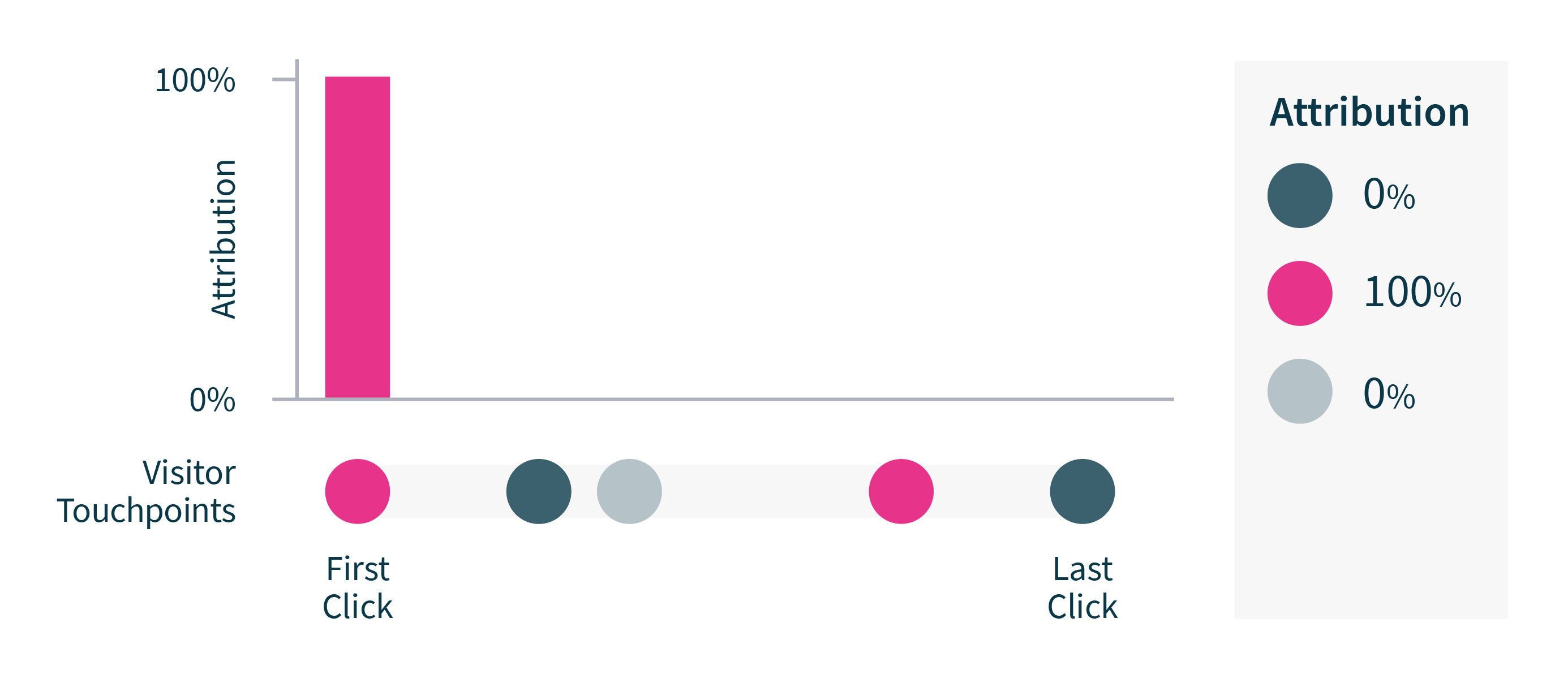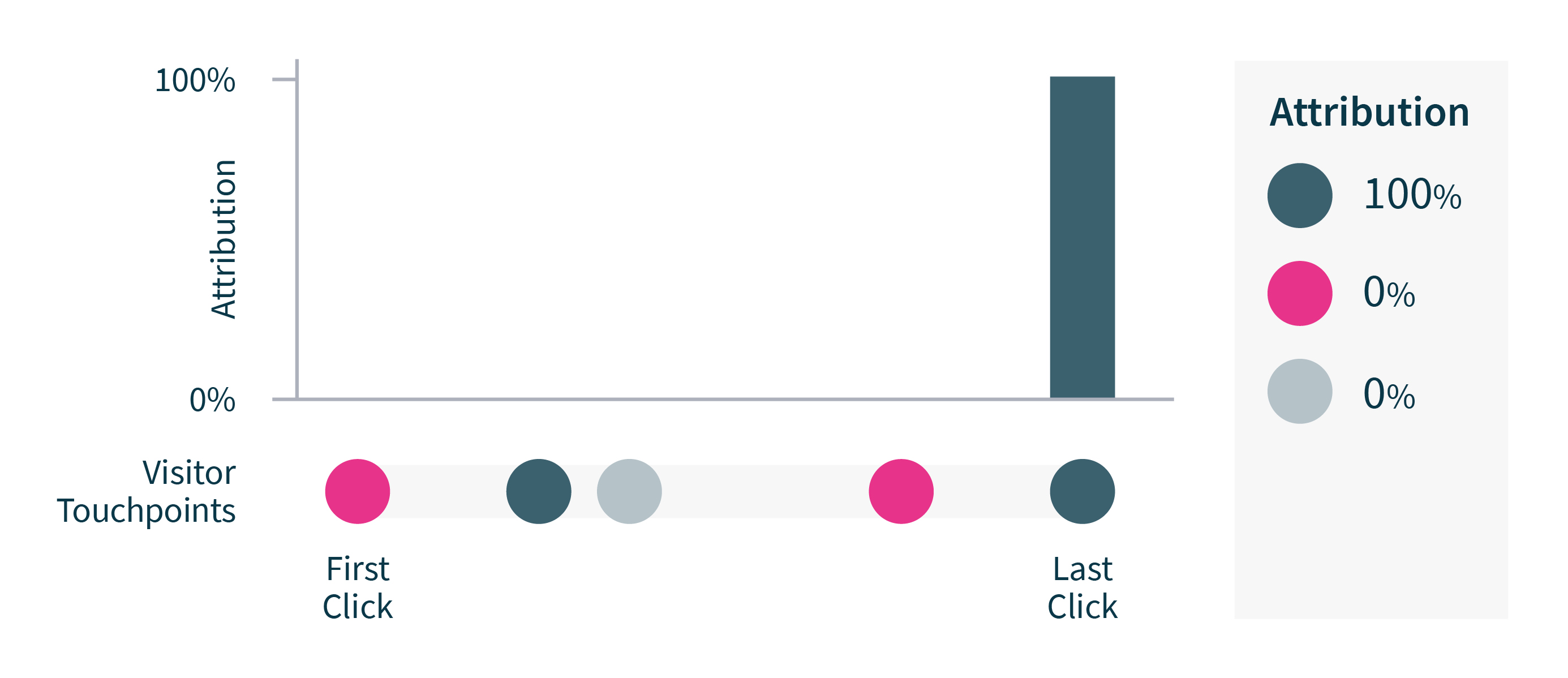Last touch attribution. Single touch attribution. Positional. Time decay. What does it all mean anyway? There are so many attribution model types available to marketers that it can be difficult to understand which one is right for your business.
The most important thing to bear in mind is that marketing attribution can bring tangible benefits to your over-arching strategy. Customers are rarely converted through a single interaction, so if you can identify your most effective marketing activities, you can optimise accordingly. This saves your business time and resource in the long run.
In this blog, we’ll explore the various marketing attribution model types available to you. We’ll focus particularly on multi-touch attribution models and explain the pro and cons of each, plus we’ll show you how to take your marketing attribution to the next level in 2022.
What benefits can attribution modelling bring?
Attribution modelling is a set of rules that enables you to understand which touchpoints in your customer journey have the greatest influence on conversion, by assigning value to each.
There are several common marketing attribution models, which offer different levels of sophistication and nuance. Attribution modelling can have a significant impact on revenue and marketing budgets, by giving credit where credit is due.
Here are some of the benefits that attribution modelling can bring to your business:
-
Understand your best-performing channels and switch off ones that aren’t working.
-
Accurately assign revenue credit and identify your highest value marketing activities.
-
Streamline the data gathering process and make analysis easier.
-
Discover how many touches your leads need before making a purchase.
-
Extract actionable insights about customers to inform your wider strategy.
What is the most common attribution model?
There are five commonly used attribution models which offer different levels of insight: first click, last click, linear, positional and time decay.
First click

Attributes 100% of the conversion to the first point the customer interacts with, otherwise known as the point of entry. The upside is it’s easy to set up and interpret, primarily focused on the idea of awareness which can be useful when tracking activity like PR. The downside is it ignores the complexity of the customer journey, assigning 100% of the return on investment to just one moment.
Last click

Attributes 100% of the conversion to the last point the customer interacted with before they converted into a sale. The upside of this model is it’s also easy to set up and can provide quick, actionable insights. The downside is it can be misleading, as it fails to account for awareness driving or previous customer activity that may have influenced the final purchase decision.
Linear
.jpeg?width=800&name=attribution-model-linear-v2%20(1).jpeg)
Attributes the conversion equally to each of the touchpoints during the acquisition process. The upside is it tends to be more sophisticated than first and last click models, with adding too much complexity when implementing. The downside is results are often questionable – if a customer visits the same channel twice it will get double the credit – and it fails to identify those superstar moments that convert a lead into a customer.
Positional
.jpeg?width=800&name=attribution-model-position-based-v2%20(1).jpeg)
Time decay
Attributes the conversion by assuming that the closer a touchpoint is to purchase, the more credit should be given for conversion. This is grounded in the theory that the buyer journey accelerates toward the end, meaning those final touchpoints are the most critical for conversion. This is particularly effective in understanding which tactics lead to the biggest step changes during the buyer journey and monitors the impact of call to action. However, it risks attributing too much value to those touchpoints when the purchase decision was made much earlier in the research phase. This makes it unsuitable for industries or markets that work to longer lead times.
Which attribution model should I be using?
You might be wondering, what is the best attribution model? Well, attribution modelling is useless if you’re only measuring half your touchpoints. The right marketing attribution model is the one that fits your conversion path and addresses each touchpoint to avoid potential gaps in the data.
For this reason, multi-touch attribution modelling is one of the most effective models. Multi-touch models - such as linear, positional and time decay - acknowledge that customer journeys are never straightforward. They account for the fact that customers are exposed to multiple touchpoints and divides credit accordingly across multiple touchpoints. This gives you a more holistic overview of the customer journey, regardless of how complex or fragmented it may be.
How are brands using attribution models to improve their marketing?
So, how exactly are brands using attribution models to improve their marketing and increase revenues? We’ve selected three customer case studies to demonstrate the real impact of accurate marketing attribution modelling.
Hurtigruten
Despite positioning themselves as a digital-first business, Hurtigruten understood that phone calls are an important part of the buying process for its highest value products. In order to understand what channels are selling these large cruise packages, Hurtigruten needed a way of tracking where sales calls were coming from, and how to generate more.
Hurtigruten used Infinity to track individual campaigns and understand where calls were coming from, connecting online with offline. They were able to identify the print, direct, and outdoor marketing work that was responsible for driving high quality calls.
With a clear view of how all channels were performing, Hurtigruten had the insights to continuously make informed decisions and optimise the quality of calls they were receiving. They were able to achieve the following:
-
5x qualified calls from all offline marketing sources
-
Calls from brochure advertising rose by 350%
-
Decreased waste calls from PPC by 22%
-
Increased ratio of high-quality calls to the business by 4%
Internet Gardener
Internet Gardener may be an award-winning online retailer, but 35% of their orders come via phone. These calls were identified as their highest value orders that accounted for over a million pounds of revenue during peak seasons, featuring big-ticket items that customers wanted to discuss in detail such as sheds, furniture and log cabins.
Internet Gardener swiftly installed Infinity to track and record every call that came into their business, showing them what source – such as search, email, or social - lead to the call as well as any PPC terms that were clicked. These calls were tagged based on the outcome, including the amount of revenue generated when a sale was made.
By analysing what was driving high value calls during busy periods, Internet Gardener knew where to shift their marketing budgets and at what times. With this insight, they achieved the following:
-
Increased average order value by 30% for telephone calls
-
Improved conversion rate of calls by 40.5%
-
Ratio of PPC clicks to sales rose by 35%
-
Lowered the rate of cost-per-acquisition
Answer4U
Answer4u have always signposted clients to call its sales team. As a result, calls play a pivotal role in its buyer's journey. The conversion rate for Answer4u over the phone was increasing, but the ability to track, attribute, and report on these calls was non-existent. It was crucial to understand what channel was prompting potential customers to call and how to maximise their marketing efforts in these channels.
Infinity gave Answer4u the insights into which campaigns were driving leads, based on keyword-level call attribution, and enabled Answer4u to optimise their strategies and provide reliable omnichannel call reports to stakeholders within the business.
Acting on insights from the call data uncovered with Infinity, Answer4u were able to achieve the following:
-
21% increase in leads generated year-on-year
-
26% increase in high-value calls
-
54% increase in annual net profit
-
125% increase in budget for ad spend, justified based upon Infinity data
How can I take attribution modelling to the next level?
We’ve established the importance of attribution modelling and the different models available. If you want to take attribution modelling to the next level, you need to have the right tools in place to extract real, valuable data.
Call tracking can assist with covering potential blind spots in your customer journey, by collecting data that can connect your touchpoints with the calls that led to a purchase. It allows you to connect in-depth marketing data such as keywords and marketing channels to those winning calls.
Multi-channel marketing attribution relies on being able to see the full picture. It’s not just about collecting data. It’s about combining multiple sources and visualising it in a way that makes sense. That’s why Infinity’s suite of tools are designed to integrate seamlessly with a range of partners - including Google, Facebook and HubSpot - letting you analyse data how you want it, when you want it, in the format that suits you best.
Key takeaways
So, what have we learned about attribution modelling? Here are the key takeaways to help you select the most relevant model for your needs and enhance your overall approach:
-
There are five commonly used types of attribution modelling: first click, last click, linear, positional and time decay.
-
Implementing a marketing attribution model can help you identify your most valuable touchpoints and optimise campaigns accordingly.
-
Every business is different, selecting the right attribution model depends on the complexity of your customer journey and the touchpoints you need to include.
-
Multi-channel marketing attribution gives you a holistic overview of your marketing campaigns, to understand the shape of individual buyer journeys based on real customer data.
-
Call tracking can assist with creating better multi-channel marketing attribution by connecting the dots between your online and offline activities - as well as offering partner integrations - to give you a more complete picture of the customer journey.
Every conversation matters. Start one with us to discover how call tracking can help you optimise your most valuable customer conversations.